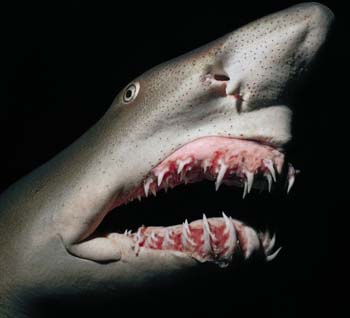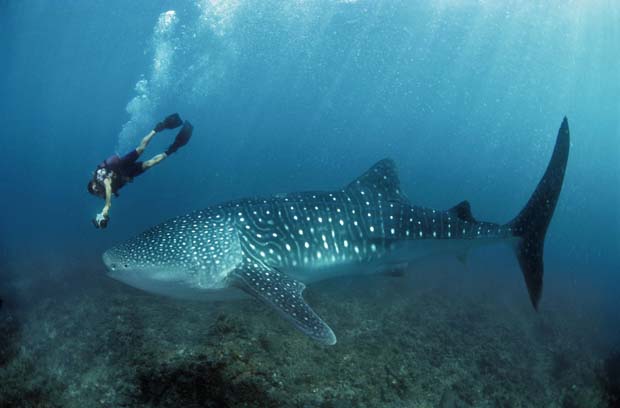 [dropcap]L[/dropcap]ast week, I contacted George H. Burgess, Director, Florida Program for Shark Research (Florida Museum of Natural History Ichthyology Department) to get approval to use one of his wahoo photos for our profile of Acanthocybium solanderi on Wednesday. In his approval-of-use email he added a request: “Would I be interested in reviewing a book he had co-written with Gene Helfman (University of Georgia) titled Sharks: The Animal Answer Guide.” I said yes.
[dropcap]L[/dropcap]ast week, I contacted George H. Burgess, Director, Florida Program for Shark Research (Florida Museum of Natural History Ichthyology Department) to get approval to use one of his wahoo photos for our profile of Acanthocybium solanderi on Wednesday. In his approval-of-use email he added a request: “Would I be interested in reviewing a book he had co-written with Gene Helfman (University of Georgia) titled Sharks: The Animal Answer Guide.” I said yes.
Post commitment, I got to thinking; why would a man of such academic achievement want a fly fishermen / publisher of an online fly fishing magazine to review a book he co-authored about sharks? Surely I’d be over my head on page one.
Well, the book arrived. I now understand why Mr. Burgess wanted someone with a passion for fishing and conservation to review it.
Is it an academically important and a technically rich tome with a bibliography accorded text books? Yes, but here’s the catch. A 12 year old could read it, understand it and enjoy it if he or she was at all curious about sharks. A marine biologist would find it scholarly. And any angler reading it would get a lot out of it, too. All that’s needed is a little curiosity which sharks automatically provoke.
“Sharks” has no story line. You could, as I did, start on page 163 (Do sharks feel pain?) or on page 35 (How well can sharks hear?). The authors answer every question that could possibly be asked about sharks (Will sharks be affected by global warming?).

Sand tiger sharks feed on slippery fish and squid. There’s no escape from these dentition. Photo is from the book. – credit is given to Jeff Rotman.
There are 10 illustrations/drawings, 72 B&W and 34 color photo – worth the price of the book alone.
Although there are more than 1,000 species of sharks worldwide – it seems we humans are the sharks worst enemy. Over fishing many species and shear persecution – putting some species of sharks in a deep decline and some closing-in on extinction.
Whether you fear sharks or just have a curiosity about them, “Sharks: The Animal Answer Guide” will homeschool you about these fascinating creatures that have been around for millions of years. This book makes readers understand the important role sharks play in the upkeep of the overall environment of the oceans.
My copy will gather no dust – it’s on my fly tying table and open to page 152 (Do sharks chew their food?). Get a copy, you’ll be glad you did.
[information]
Sharks: The Animal Answer Guide by George H. Burgess and Gene Helfman
Official Publication Date: May 2014, but copies now are available at the usual online book outlets and better brick and mortar book stores.
Size 7 X 10, 288 pages
Available hard cover ($50 – approx.), soft ($26.95 approx.) and electronic / e-book.
[/information]



Join the discussion One Comment